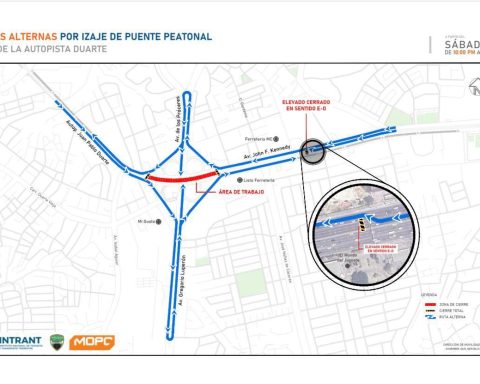The report of twenty patients with “pneumonia of unknown origin”, which killed several people in Argentina at the end of last month, made the world hold its breath. It was not for less, the picture described in the private clinic “Medical Light” of San Miguel de Tucumán, in the province of the same name located 1300 km north of Buenos Aires, presented “alarming similarities” with what was reported in the Chinese region of Wuhan, in December 2019 and that resulted in the pandemic of the COVID-19. Hence, the press and experts from around the world, including those from the World Health Organization (WHO), PAHO, the epidemic intelligence team of the European Center for Disease Control, the CDC (Center for Disease Control Diseases, for its acronym in English) of Atlanta, in the United States were put on high alert for the possibility of the emergence of a new potentially pandemic disease.
It all started on August 29, when the Epidemiology Directorate of the province of Tucumán notified the Epidemiology Directorate of the Ministry of Health of Argentina of the detection of a “conglomerate of 6 cases, two of which died, of bilateral pneumonia without aetiological identification”, that is, without knowing the cause. Five of the patients were health workers and the other had been hospitalized in the intensive care unit of the aforementioned private sanatorium. On September 1, the identification of three new cases was reported, all health workers. After the variation of the acceptance criteria of the outbreak, 22 affected have been identified: the 6 deceased, 10 with outpatient follow-up and another 6 who remain hospitalized. Of them 3 with respiratory assistance, so the number of deaths could increase in the coming days.
Since the alarm was raised, patients have been tested for more than thirty different diseases, including COVID-19, Influenza A and B, Hantavirus… in order to determine the cause. Finally, last Saturday the Argentine Minister of Health, Carla Vizzotti, announced that the causal agent of the outbreak had been Legionella and that it is still being investigated to determine which serogroup it belongs to. The bacterium had been isolated “in four samples, three respiratory and a puncture biopsy of one of the deceased.” This discovery was the one that generated a huge sigh of relief throughout the planet.
To better understand what we are talking about, it is important to say that this germ, Legionella, is a bacterium that has more than 50 serotypes, 24 of which can be infectious to man. However, more than 90% of cases are caused by legionella pneumophila, which usually causes a picture with two forms of presentation, a mild, self-limited course —which heals itself— known as “Pontiac fever”, and “Legionnaire’s disease”, which is a severe bilateral pneumonia. The second type was discovered in January 1977, precisely after an outbreak occurred among the participants of the 58th Convention of the American Legion in Philadelphia – hence the name. However, the first cases were reported when the causal agent was not yet known, in 1968, in Pontiac, Michigan, among people who worked in the city health department or had visited it.
Legionella is normally found in freshwater environments such as lakes and streams, however, it is urban water systems that represent the main source of disease for humans. It reproduces by biofilms and is relatively resistant to chlorine levels in drinking water. The development of aerosol storage and generation systems, such as cooling towers, spas, atomizers in grocery stores, among others, have increased their transmission. Between 2000 and 2018, US health departments reported approximately 10,000 cases. However, one study reported that this figure could be between 1.8 and 2.7 times higher. In that same period, three outbreaks of the disease were identified in Spain with at least 16 deaths. Finally, in 2020 in Germany, according to the “Robert Koch” Institute, 1281 cases were registered with a mortality of 4.8%.
Legionella thrives in the summer and early fall months, when water temperatures range between 25 and 45°C. Outbreaks, such as the one that occurred in the northern Argentine province of Tucumán, are often the focus of media attention due to their frequent association with specific facilities. These outbreaks appear when people have inhaled aerosols containing water contaminated with the bacteria. Precisely, due to this route of transmission of the disease, there is no risk of an epidemic, much less a pandemic, because it is not transmitted from person to person. Symptoms depend on which of the two clinical forms of the disease is treated. If it is a Pontiac fever, the patient will present fever, malaise and muscle aches, which will subside between 2 and 5 days. In the case of Legionnaires’ disease, it is a picture of bilateral pneumonia in which shortness of breath, headache and diarrhea are also frequent. The treatment is antibiotic and can combine more than one medication.
Returning to the outbreak that occurred in the Argentine province, the press in that country has opened a veritable Pandora’s Box that has the “Luz Médica” clinic at its center. And it is that a situation of this type is only possible due to the lack of hygiene and the incorrect maintenance of the facilities. Frequent sampling and study of water to detect the presence of bacteria and other pathogens is common in hospital institutions around the world, which is key in hospitals, because cooling systems are associated with water pipes. Additionally, testimonies from local workers who report the presence of rats have come to light; as well as complaints by the institution’s workers for irregularities during the time of the pandemic. Criticism has also reached the local and national health ministry for “lack of controls and inspections.” The clinic has been closed for several days and “an exhaustive study of the facilities is being carried out to make it safe again.”
In any case, the world can breathe easy, we are not facing the appearance of a new, deadly and potentially epidemic disease, but rather the outbreak of a well-known bacterium, with a curious history, which has struck again. Of course, the alarms for epidemiologists must remain “on”, especially for those who work in hospital units. Situations like those in Tucumán can appear anywhere where things are not done well.















